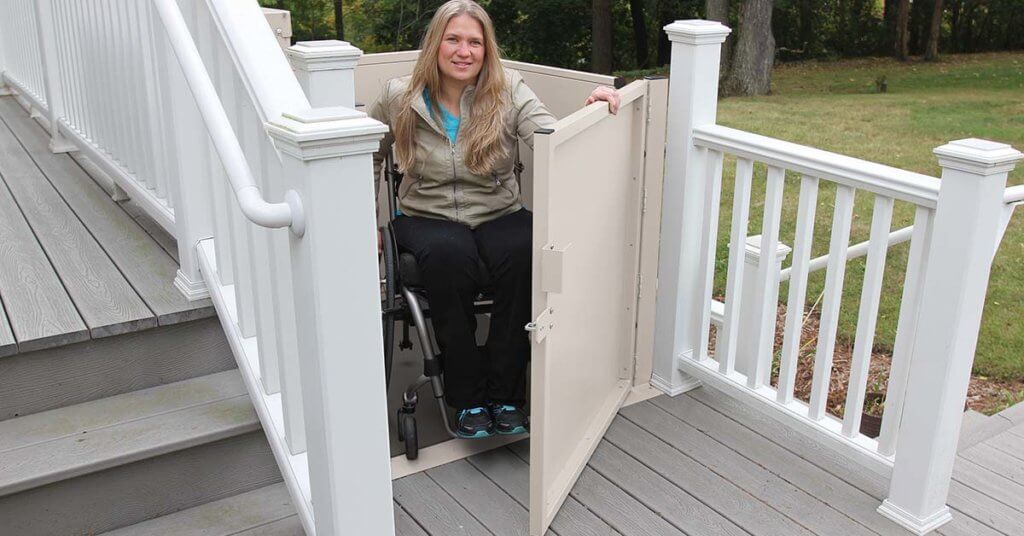Our MobilityWorks@home experts are often asked, “Should I get a wheelchair ramp or a lift for my home?” The answer depends on factors such as the user’s mobility, staircase height, available space and whether the installation is permanent or temporary. While our trained technicians can help you choose which type of mobility solution is right for your needs, the overview below discusses a few key benefits and differences that can help guide your decision.
Wheelchair Ramps
Wheelchair ramps are designed for your specific space and include pre-assembled ramps, handrails and platforms. They do require some effort to navigate, unlike vertical platform lifts, and as a result, are better suited for scooter and power wheelchair users. They can be configured for almost any site, and are both cost-effective and low maintenance depending on the amount of ramp needed. Because they come pre-assembled, installing a wheelchair ramp is typically a quick and easy process that doesn’t require anchoring into concrete footings or pads. Wheelchair ramps sold through MobilityWorks@home have a built-in anti-slip surface and do not rust or warp, making them a durable mobility solution.
- Permanent installations
- Portable and temporary ramps
- Rental options for short-term needs
Wheelchair Ramp Benefits
- Best for low-rise environments
- Ideal for scooter or power wheelchair users
- Easy installation
- Low maintenance
- 750-pound weight capacity
- Flexibility to own or rent
- Permanent or portable options
Explore our wheelchair and scooter ramp solutions
Vertical Platform Lifts
Vertical platform lifts resemble an elevator with a platform that can be raised and lowered to transport a user safely to another floor. While they are often seen in businesses, churches, and schools, they are also often used outside residential homes as a “porch lift.” These lifts are operated mechanically and require little effort from the user, making them an easy-to-use option for almost anyone in need of mobility assistance. They are more effective than wheelchair ramps in high-rise environments involving a large staircase or multiple levels that need to be accessed. Installing a vertical platform lift does require a concrete pad to anchor the equipment, making the installation process more complex than that of a wheelchair ramp.
- Bruno®
- Harmar®
- LiftUp®
Vertical Platform Lift Benefits
- Best for high-rise environments
- Easy to operate
- Suitable for almost anyone, including manual wheelchair users
- Weather-protected controls and switches
- 750-pound weight capacity
- Requires less space than a wheelchair ramp
Explore our vertical platform lift options
Customized to Your Specific Needs
There is no one-size-fits-all solution when it comes to accessing your home safely and comfortably. That’s why our MobilityWorks@home technicians are trained to find the wheelchair ramp or lift that fits your home and your needs. Give us a call or contact us today so we can help you stay in the home you love.
Wheelchair Ramp Buyer's Guide
Download our free Wheelchair Ramp Buyer's Guide to find out what type of handicapped ramp is right for your home, view model comparisons, financing options, and more!

